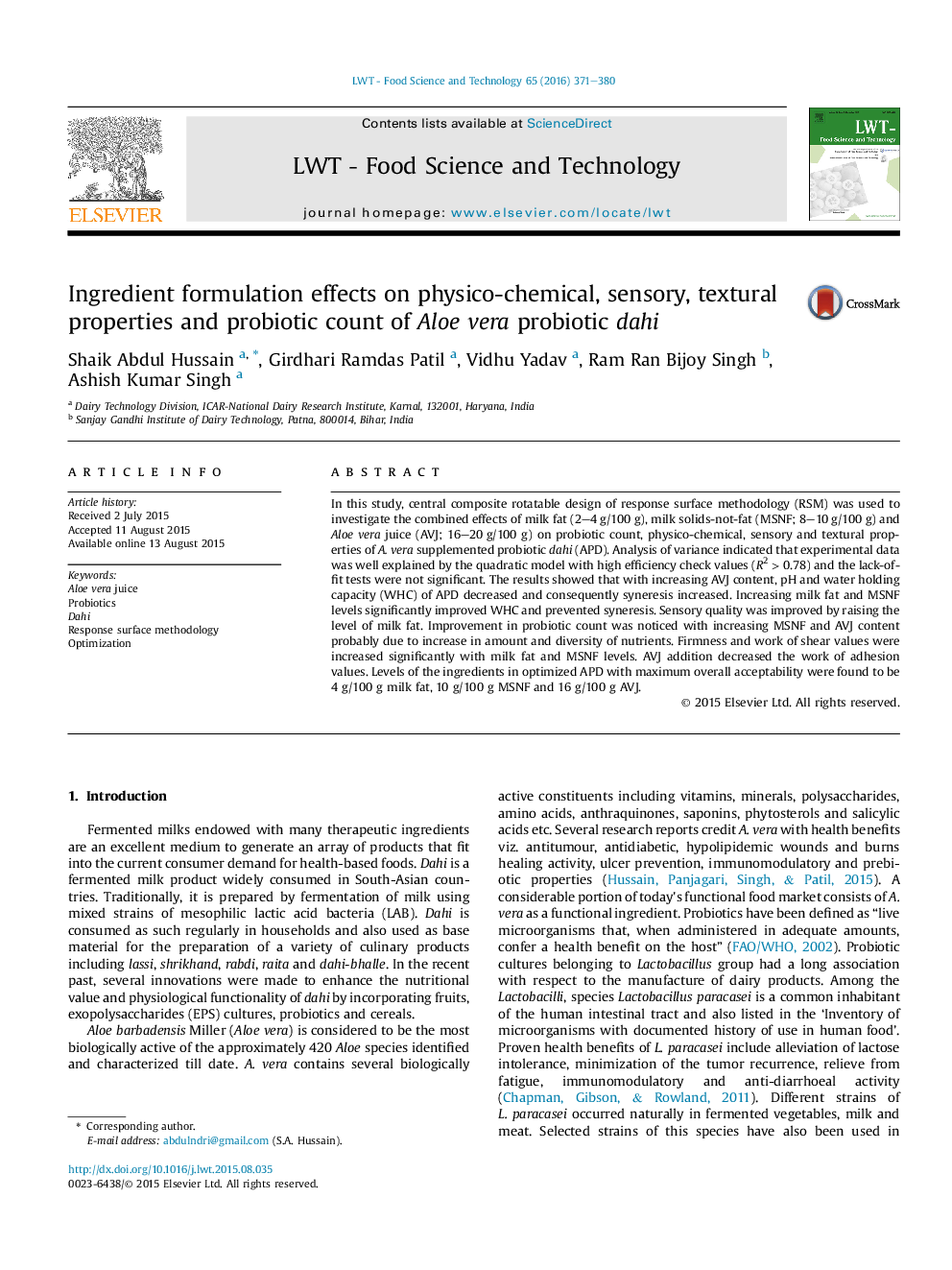| Article ID | Journal | Published Year | Pages | File Type |
|---|---|---|---|---|
| 6401558 | LWT - Food Science and Technology | 2016 | 10 Pages |
Abstract
In this study, central composite rotatable design of response surface methodology (RSM) was used to investigate the combined effects of milk fat (2-4Â g/100Â g), milk solids-not-fat (MSNF; 8-10Â g/100Â g) and Aloe vera juice (AVJ; 16-20Â g/100Â g) on probiotic count, physico-chemical, sensory and textural properties of A. vera supplemented probiotic dahi (APD). Analysis of variance indicated that experimental data was well explained by the quadratic model with high efficiency check values (R2Â >Â 0.78) and the lack-of-fit tests were not significant. The results showed that with increasing AVJ content, pH and water holding capacity (WHC) of APD decreased and consequently syneresis increased. Increasing milk fat and MSNF levels significantly improved WHC and prevented syneresis. Sensory quality was improved by raising the level of milk fat. Improvement in probiotic count was noticed with increasing MSNF and AVJ content probably due to increase in amount and diversity of nutrients. Firmness and work of shear values were increased significantly with milk fat and MSNF levels. AVJ addition decreased the work of adhesion values. Levels of the ingredients in optimized APD with maximum overall acceptability were found to be 4Â g/100Â g milk fat, 10Â g/100Â g MSNF and 16Â g/100Â g AVJ.
Related Topics
Life Sciences
Agricultural and Biological Sciences
Food Science
Authors
Shaik Abdul Hussain, Girdhari Ramdas Patil, Vidhu Yadav, Ram Ran Bijoy Singh, Ashish Kumar Singh,
